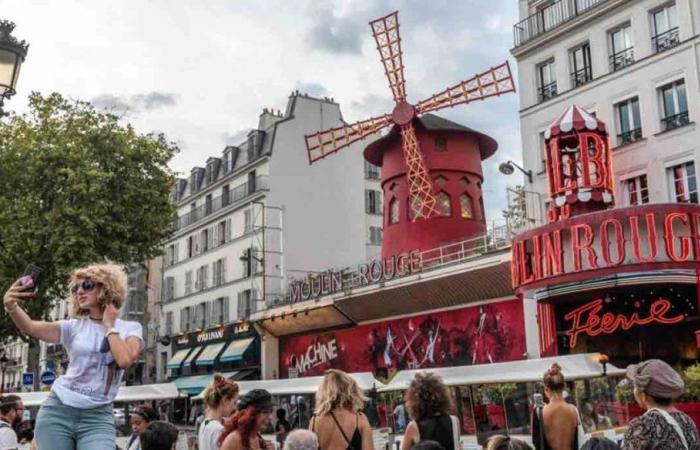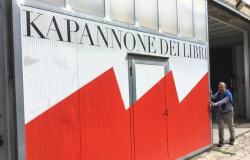It’s not Paris if there’s no Moulin Rouge. Last April, the well-known symbol of the city of love, nightlife and Parisian transgression lost its blades due to bad weather. After a few weeks, the famous Parisian cabaret has returned to its original splendor with new blades, which will no longer turn as before, but which give it the appearance it has always had. A grand event will celebrate the rebirth of the Moulin Rouge with great fanfare, with fireworks and a free can-can show, on July 5th.
THEThe Moulin Rouge gets its “wings” back
On June 24th, the “wings” have been restored to the Moulin Rouge which he had lost during a heavy storm last April. The new blades, made of steel and aluminum, weigh 110 kilograms each and are identical to the original ones, except that they do not rotate. In fact, the wings would only be temporary and were created at the speed of light in anticipation of the great event that is about to take place in Paris: the 2024 Olympics, which will start on July 26th.
Moulin Rouge, symbol of the Parisian lifestyle
The famous nightclub located in Parisian neighborhood of Pigalle, not one of the chicest, but certainly among the most touristy (it was once the red light district), thanks to the Moulin Rouge, it is one of the symbols of the French capital after the Eiffel Tower, the Louvre and Notre Dame. Founded by theater impresarios Joseph Oller and Charles Zidler, it opened its doors in 1889. Its famous red windmill on the facade quickly became a symbol of Parisian nightlife. Designed to attract a bourgeois clientele looking for fun, the Moulin Rouge immediately offered transgressive and original shows, with dancers in skimpy costumes, acrobats and live music. It is thanks to the Moulin Rouge, which has always been the most famous nightclub in Paris, that the French can-can became popular all over the world. In all these years, the place has never changed. Even today its interior is decorated in a typically French fin de siècle style. Just take a look at some of the paintings that have portrayed him in the past, such as “Ball at the Moulin Rouge” by Henri de Toulouse-Lautrec from 1889-90 (and many others, given that the artist worked on behalf of the venue, painting several posters advertising), to realize this.
The idea of the mill was inspired by another already existing and very successful venue in Paris, the Moulin de la Galette, also in the Pigalle district a stone’s throw from Montmartre, a dancing restaurant created in 1870 inside an old windmill and frequented by many artists and bohemians. He was portrayed by several painters, first of all Pierre-Auguste Renoir, in the famous painting “Bal au moulin de la Galette” which can now be admired at the Musée d’Orsay.
Some of the Moulin Rouge dancers became real stars in the Belle Époque years. All the high society frequented it, even the Prince of Wales and future King Edward VII of England wanted to go there on the occasion of a personal trip to Paris (Queen Elizabeth II also came in ’81). Over the years this venue, through ups and downs, has seen all kinds of things, changing repertoire, from solo can-cans to operettas and concerts (Édith Piaf, Yves Montand, Joséphine Baker, Charles Aznavour and, more recently, also Liza Minelli, Dean Martin and Frank Sinatra. Even today, the Moulin Rouge offers evening dance performances and is a major tourist attraction.






